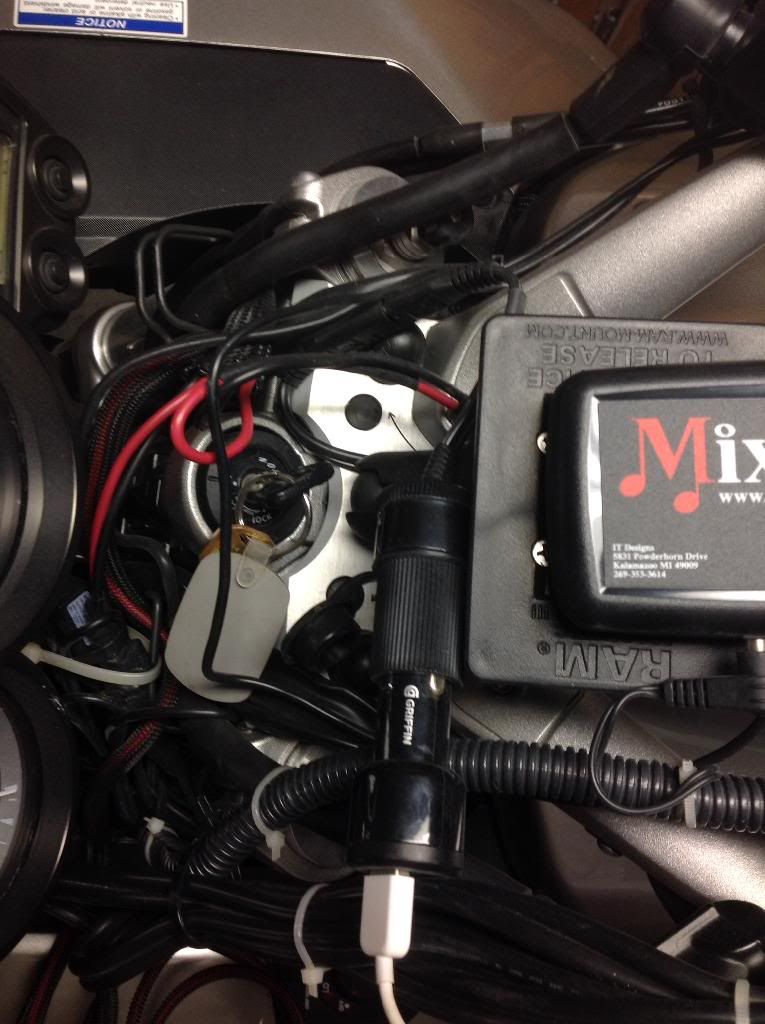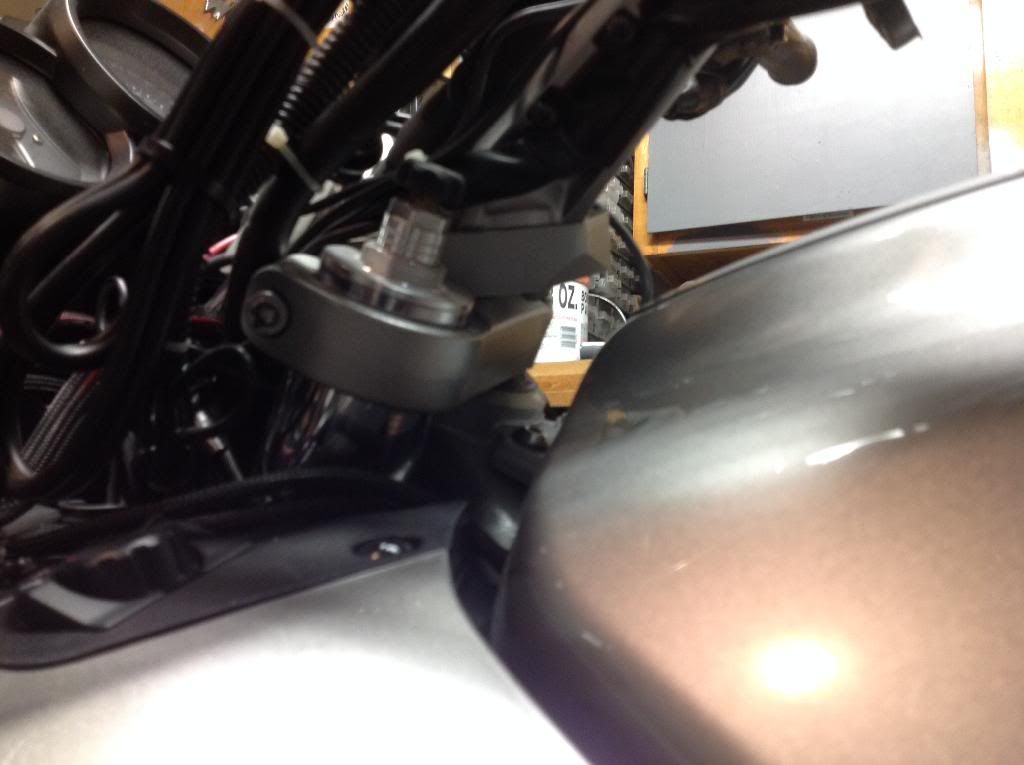Well, I bravely took my riser to the machine shop for some modification so I could increase the pull back a little. As originally installed the riser looked like this (note: this is the most forward position of original handlebar bolting):

After modification I was able to pull the riser back and it looked like this (note: this is the most rearward position of the original handlebar bolting):

I had the plate modified per this sketch:

Even after modification per the above sketch I had to increase the remaining chamfers on the bottom side because of the transition from the shock clamp to the flat area where the handlebars normally mount. I'm sure if I had done a little measuring I could have had the chamfers done at the machine shop, but I kinda missed the transitions when I was planning the modification. In the end I just used my dremel and file to increase the chamfers. Since it is aluminum it didn't take long and with it being on the bottom no one sees it.
I installed the handlebars on the plate in the furthest back position, and rotated the most they would go back (away from the front).
I elongated the hole in the clutch line bracket:

Also, I elongated both holes on the brake line bracket/standoff so that the brake line block would come back more towards the original Yamaha position, and I flip the bracket over which kinda pushes the block out away from the centerline of the bike. All this helped improve the bend radius of the brake line when the handlebars are turned hard right to the lock. It's still a little tight, but I'm not too concern cause this is not a constant operating position. Sorry no pic yet...I'll try to post one later.
Another small problem/concern is that when handlebars are turned full left, the throttle won't return on its own. The cables bind up a bit on the bottom of the brake line block, but it releases with just a slight rotation of the handlebars to the right. I realize this could be a risk at slow speed maneuvers but I'm aware of it so will take associated precautions.































































